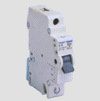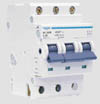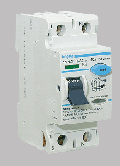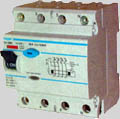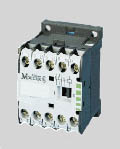
| |||||||
All About Your Electrical PanelThe electrical panels found in Israeli homes come in many configurations and sizes. I will attempt to give you a general idea of what they consist of, and the function that each part serves. The electricity supplied by the Israel Electric Company enters through your electric meter and then works its way towards your electric panel. Generally speaking, the Electric Company takes responsibility for your service up to and including your meter. From the meter and onward throughout your home they consider as being your responsibility, and will rarely have anything to do with any problems developing from there, including your electric panel. For electrical problems in your home they will usually advise you to call an electrician. The three basic components in your electric panel are the main breaker - MCB (MCB = miniature circuit breaker), main GFI (Ground-fault Interrupter), and all the breakers (MCB) that control all the different lines in your home. Of course you may have various other components such as a contactor, timer, switch, etc, but we’ll discuss some of those components later. MAIN BREAKER Coming from the electric meter, the main line is then connected to the main breaker. Some older homes may have their main breaker located somewhere near the electrical meter (separate from the electrical panel), even though the location of the meter may be a considerable distance from the electric panel. In most cases though, the main breaker is located in your electrical panel. If the service you are getting is single-phase, then the breaker will look like most others in the panel but having a higher current rating.
GROUND-FAULT INTERRUPTER The next item that you will find in your panel is the “GROUND-FAULT INTERRUPTER”. This is known by many names including GFI, GFCI, RCD, ELCB, the “safety device”, and in Hebrew as “mimsar p’chat”. The single-phase GFI is twice as wide as a standard breaker, has either an up and down lever, sideways lever, or turning dial type lever. It also has a test button. The 3 phase GFI looks the same as the single-phase one, except it’s bigger (the size of 4 breakers). There are some old types of single-phase GFIs around that are the same physical size as the 3 phase. Most companies don’t make the large type anymore.
The GFI measures the current going through the live wire and neutral wire. If there is a difference of more than a few milliamps between the two, it will trip. Unlike the main breaker, the GFI does not really care
The one thing that’s common to most GFIs is the “test” button found somewhere on the device. This button will cause the device to trip. It is good practice to push the button once every couple of months in order to make sure the GFI is working properly. If the GFI does not jump when the button is pushed, a qualified electrician should be called to investigate and possibly replace the GFI. VARIOUS LINE BREAKERS (MCB) The rest of the breakers are for the various lines around your home. These lines can be distributed in many different ways, depending on the design, and the electrician who did the work. The two standard sizes used in Israel are 10 amps and 16amps, although any size can be used depending on the purpose. There are certain lines in your home, that according to the Israeli standard, MUST be designated lines. This means that only one device is on that line and nothing else. Such lines include the electric water boiler, the washing machine, the dishwasher, and the oven. If your service is 3 phase, then it is possible that you have one or more 3 phase line breakers either supplying electricity to a secondary panel, or to a 3 phase device (air conditioner, oven, etc). |
|||||||
|
These line breakers have two purposes. The first purpose is to protect the wires in the wall so that they don’t burn up. In order for them to accomplish this they must be properly rated for the wires used on that line, otherwise they can’t do their job. The second purpose is to isolate a line, which is shorting or is being overused, by jumping before the main breaker. This prevents a total shutdown of all the electricity in your home, with only the particular faulty line tripping. Sometimes though, if you have a very strong short, it will go through both the line breaker and the main breaker, causing everything to go out. The following are some other components that can be found in certain panels. CONTACTOR In essence, a contactor is a switch, having 1 or more contacts, that operates with the help of an electric magnet which closes and opens the contacts. The contactor is mostly used in conjunction with a timer or another device that will regulate the current causing it to open and close.
Many times the contactor is installed deep inside the electric panel, where it remains out of sight until the panel is opened up.
TIMERS There are many different types of timers around. There are simple spring type timers that you set for a certain amount of time, and when that time passes, it shuts off. There are timers that have a dial, where you set certain times for the timer to switch on and off. There are digital timers, programmable timers, and dual timers. In most homes in Israel, timers are used to operate devices around the home (such as lights, air conditioning, fans, etc) on the Sabbath when operating such devices is forbidden. Timers are also frequently used to operate certain devices when nobody is home. SWITCHES Switches in an electrical panel operate exactly like the average switch found around your home. They are used to switch things off and on manually. Many times they look very similar to MCBs, but they are not MCBs, and will NOT protect any line or trip for any reason.
|



